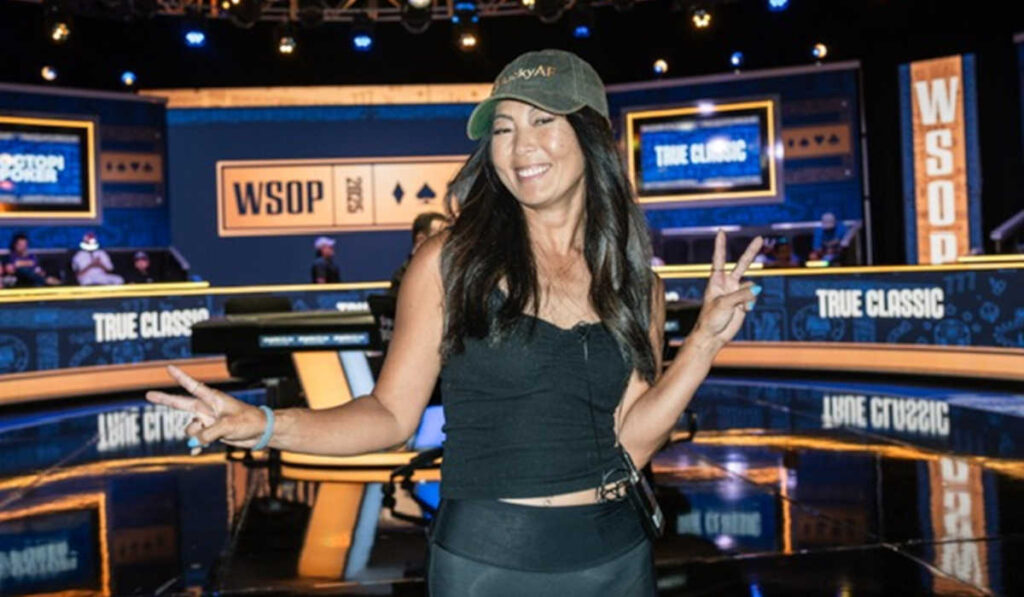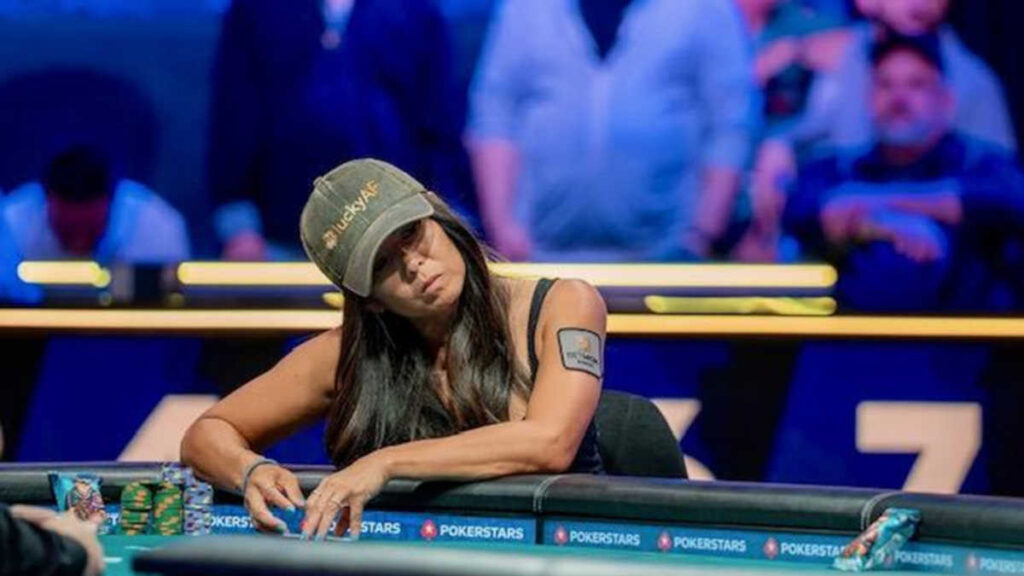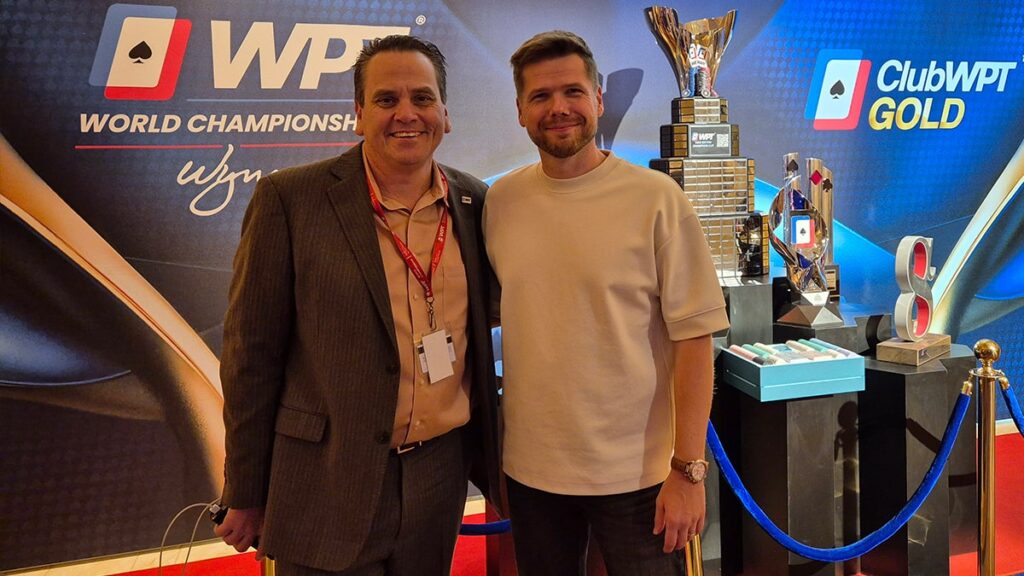Images courtesy of World Series of Poker
In poker, few players embody balance, competitiveness, and professionalism quite like Esther “E-Tay” Taylor. A respected presence on the felt, Taylor has spent nearly two decades proving that mixed games aren’t just for specialists—they’re for players who love creativity, discipline, and problem-solving.
While her resume includes deep runs, final tables, and groundbreaking milestones, Taylor’s broader legacy is taking shape in her commitment to helping others—especially women—find their place in the mixed game community.
A Mixed Games Mindset
I consider you somewhat of a pioneer in mixed games. Would you agree with that characterization, and what was it like helping to lead the charge?
(laughs) I don’t know if I’d call myself a pioneer—there were women like Jennifer Harman and Cyndy Violette who were really breaking barriers before me—but I’ve definitely tried to be an advocate.
When I started playing poker in 2006, I was fortunate to have some time online before Black Friday. I discovered mixed games in 2007 and immediately knew they suited how my mind works; they’re more creative and dynamic.
Back then, it was easier to learn because you could play Razz or Stud Hi/Lo for pennies. That kind of low-risk environment just doesn’t exist anymore. I always tell people who want to learn mixed games that it’s hard now unless you can put in massive volume at reasonable stakes. So, pioneer? Maybe not. But current advocate—absolutely.
What makes a good mixed game player?
It’s the same thing that makes a good poker player overall. You need confidence, but the right kind. I tell my daughter this too: carry yourself with confidence, but not entitlement. Go into each tournament respecting the game, doing your best, and not being too attached to individual results.
The best mixed game players are creative and open-minded. They’re not afraid to deviate from GTO or what “the book” says. When you watch someone like Nick Schulman, you’ll see him play a hand one way one year and completely differently a few years later.
You have to be willing to trust your intuition and be okay with being wrong sometimes.
Poker doesn’t owe anyone anything. I remind myself of that constantly. You can’t expect to win just because you’ve worked hard. Everyone at the table wants to do well, so your edge comes from controlling your mindset and how you respond when things don’t go your way.
Which mixed game is your favorite, and why?
I’ve always gravitated toward Stud Hi/Lo. It’s the game I feel most comfortable in, probably because of the element of visible information. I’ve coined the phrase “board manipulation,” which means you can influence an opponent’s decisions based on what’s showing.
That layer of strategy and creativity really appeals to me. I love that in split-pot games, you’re constantly thinking about how to maximize every piece of value, and that just fits how my brain works.
Other than PLO, which mixed game do you think has the best chance of catching on with more players?
No-Limit Deuce-to-Seven Single Draw, hands down. I say that because most poker players already play No Limit Texas Hold’em, so the transition is more intuitive. The math and theory are similar, but it’s also one of the purest forms of poker—it’s all about intuition and decision-making.
I played it as part of the $50K Poker Players Championship, and there was a spot deep in the tournament where I made a theoretically “wrong” decision that turned out to be right intuitively. That’s what I love about Deuce—it rewards instinct. It’s also a game that could attract a lot of No-Limit players once they realize how transferable their skill set is.
What advice would you give to a Hold’em player who wants to try mixed games?
Have realistic expectations. Every new game is its own language. You might learn a few phrases quickly, but fluency takes time and immersion. Don’t expect instant success—just dive in, make mistakes, and stay curious.
Just like learning a foreign language, there’s no shortcut to becoming a strong mixed game player. However, the journey is really rewarding.
The Borgata Big 9-Game Mix
What was it like working with Borgata to create your Big 9-Game Mix Big Buy-In Series?
It was an incredible honor. Mixed games don’t usually get top billing because they’re not the biggest money-makers for casinos, so the fact that Borgata and BetMGM were willing to listen and collaborate was huge. They asked for my input, respected my feedback, and gave us the tools to make it successful.
The buzz leading up to it was great—nothing like it had been offered outside of the WSOP. Even though we came up just short of the guarantee, the turnout exceeded my expectations. I know it’ll only get better with each run.
What was your main goal for the series, and do you feel like you accomplished it?
The main goal was to highlight mixed games and attract new players, especially women. Seeing a woman make it to heads-up against Matt Glantz was incredible.
I’d love to see more women in future events, and I think we can accomplish that by adding satellites and creating an accessible entry point. The fact that several No Limit players jumped in was also really gratifying.
Do you see opportunities to grow the Big 9-Game Mix or take it to other venues?
Definitely. Nine games can feel intimidating, so we might start with something simpler, like H.O.R.S.E. But I think you’ll start seeing these events pop up in more places. Players are hungry for variety, and series operators are realizing that it’s good for business.
Career Milestones & Highlights
This year, you became the first woman in WSOP history to record two $500,000 cashes. How did that feel, and how do you plan to build on that success?
It’s surreal, honestly. I don’t think about stats like that until someone points them out. I’m proud, of course, but I also know how much luck and timing go into deep runs. I try to stay grounded.
It definitely gave me confidence and momentum heading into 2026, but my mindset is always about reducing mistakes, not chasing results.
Next year, I’ll be more selective with my schedule—not based on buy-ins, but on field size and tournament quality. I also see my success as a platform to promote mixed games and inspire others to try them.
What was it like coming so close to winning the Poker Players Championship?
It was only my second time playing the $50K, and to make it that deep was incredibly validating. I set small goals for each day—survive Day 1, make the money, reach the final table—and hitting each one felt amazing.
By the time we were four-handed, Michael (The Grinder) Mizrachi had all the momentum, and I knew it would take something special to beat him. I wanted to win so badly, but I’m proud of how I played. I’ve had a lot of third and fourth-place finishes lately, and I’m ready to turn those into first place wins.
You were also a WPT Shooting Star this year. What was that experience like?
It was a huge honor. I’ve always loved the WPT and have great relationships with their team. Playing as a bounty changes your strategy completely—you become a target—but it’s also fun. The atmosphere is light and supportive, and I wish more tournaments were structured like that.
Do you feel pressure when playing on a live stream?
I used to. Not anymore. I’m comfortable in my own skin now, even when chat critics go off about a hand. In fact, I like causing a bit of a stir in the chat with my unique decisions. I play my style, which sometimes means taking unconventional lines, and that’s fine.
I do think about how I represent women in poker, though. For me, it’s about showing confidence, grace, and respect—both for the game and the audience.
Life, Balance, and Perspective
How do you balance motherhood with poker?
When my daughter was born in 2009, it coincided with Black Friday, which shut down online poker. That timing made it easier to step away and focus on being a mom for a few years. Those early years with her were precious.
Now that she’s older, I can travel more. Her dad and I co-parent as a team, and that support system allows me to pursue my career without sacrificing family. I always tell people that the most successful players I know have balance in their lives. Poker should be one part of your identity, not all of it.
Your Twitter/X bio says you’re a “part-time poker player.” Why not full-time?
Because I value balance. I play when I want to, not because I have to. I’d consider myself a professional in terms of skill and results, but I don’t put in the same volume as others. I’m happy with the quality of the time I spend in this industry.
You also mention in your bio having an “attitude of gratitude.” Can you elaborate?
I was found at a train station in Korea as a baby and later adopted, so I’ve always felt deeply grateful just to be here. Every day feels like a freeroll. That perspective keeps me grounded—both in poker and life. You’ll never see me act entitled at the table. I feel lucky for every opportunity, every hand, every result.
Handling Controversy and Growth

You were recently involved in a viral hand where Harvey Castro said, “Nine million,” and some thought it was a binding raise. What happened from your point of view?
I’d been playing with Harvey all day, and when he said, “Nine million,” I knew immediately it wasn’t a raise. He had no bad intentions, and I wasn’t going to make an issue of it. You’ll never see me conduct myself unsportsmanlike just to gain an edge. Mistakes happen—we’re all human.
Do situations like that need clearer rules?
Absolutely. There’s too much gray area. The dealer and the floor should be the referees, not the players. Verbal action should be black and white across all venues so that no one is disadvantaged by interpretation.
Will that change how you communicate at the table?
Yes. I’ll be more concise and let my chips do the talking. The fewer the words, the fewer the misunderstandings.
Looking Ahead
What goals or events are you most looking forward to in 2026?
I want to be more selective with my schedule and play some of the higher buy-ins in the PokerGO studio, maybe even the $100K PokerGO Bowl.
At the WSOP, I plan to play a full mixed game schedule again. I’m also excited to help get more women into mixed games now that I have the time to focus on community involvement.
What do you hope your legacy in poker will be?
If I’m remembered for anything, I hope it’s for making the game feel approachable and human. I’ve played with the toughest competitors in poker, but I always try to make the table a positive space—for players, dealers, and staff alike.
If my presence encourages even one woman to jump into a mixed game or one fan to see poker as something creative and joyful, that’s a legacy I’m proud of.
Conclusion
E-Tay Taylor’s story is one of conviction, composure, and quiet leadership. She’s a competitor who plays to win—but also someone who sees poker as a platform for connection, creativity, and growth.
Through her results, her advocacy, and her example, Taylor continues to prove that mixed games—and the women who play them—deserve their place at the center of poker’s future.


